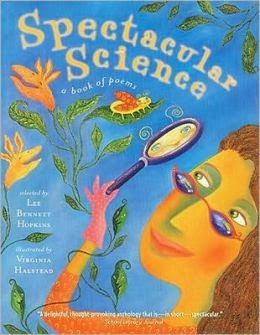- There are two main types of journals, scholarly journals and personal journals, and my focus will be on personal journals. Personal journals are very similar to diaries, as they share the inner thoughts and emotions straight from the writer. Journals can tell a number of stories, whether it's being in a foreign country, living through a war, starting a new career, or someone's everyday life. Many journals go unrecognized in society, but some become amazing works of art that end up changing the world.
Criterion for Quality and Selection:
- The number one criterion I would have for selecting a journal for my students would be purpose. There are a number of journals out there that relate to specific events in history, and these can be used to our advantage. Find journals related to the different wars, U.S. historical events, or scientific discoveries. When students can read about the events from a personal perspective they will be able to connect themselves to the material and gain an understanding of the material.
- Another criteria I would consider when selecting journals is the appeal to students. We want to make sure that the students would enjoy what they are going to read and would be able to connect to the reading. Many students may find reading about a persons daily life boring and uneventful. So finding text that is fun and exciting will keep the students engaged in the reading.
Use in the Classroom:
- Keeping their own journals in the classroom can be very beneficial for young students. Reading example journals to them before having them write their own can inspire them and get their creative juices flowing!
- Journals allow students to step into the shoes of those who lived in the past. This can lead to a great writing activity where students pretend they live in a different era and keep a journal of their experiences.
TEXT EXAMPLES:
- Complex Text Level: 6th - 7th
- Grade Level Span for Read-Aloud:
- 4th - 6th
- Major Themes:
- Penguins
- Antarctica Research
- Worthy Qualities of Writing:
- There are drawn illustrations on each page that depict what is being written throughout the journal.
- Each illustration also has a description underneath it for further explanation.
- The text also uses the illustrations to explain some of the more difficult words associated with the penguins themselves, such as ecstatic display, tobogganing, and incubating bird.
- The text provides a glossary at the conclusion of the text to define some of the more complicate/less heard words.
- Some of the words include hypothermia, natal colony, rookery, and PIT tag.
- Support Needed:
- Preteaching some of the more difficult terms mentioned above so students don't need to continually refer to the glossary, hence disrupting their reading.
- Talk about some of the characteristics of Antarctica prior to reading the text. Antarctica is a continent that is often over looked and if students have some background information on the text they may be able to understand what the writing is going through.
Evans, C., & Christensen, B. (1999) Moon over Tennessee: A boy's Civil War journal. Boston, MA: Houghton Mifflin.
- Complex Text Level: 5th - 6th
- Grade Level Span for Read-Aloud:
- 4th - 5th
- Major Themes:
- Civil War
- Growing Up
- Worthy Qualities of Writing:
- The text is written from the perspective of a young boy going through the Civil War. The boy isn't actually fighting in the war, but he witnesses the events from afar while traveling with his father.
- Students would be able to relate to this because the boy is about the age of the complex text level provided above.
- Each journal entry begins with the date and the location from which the boy is writing from. This would allow students to locate the location on a map and get a sense of the places he may see and the terrain he would have to go through.
- The text also provides a map in the back of the text that outlines the path the boy travelled with his father.
- Use in the Classroom:
- Students could put themselves in the shoes of the main character, and write their own journal about how they would handle the events the main character went through.
- Support Needed:
- Preteaching important events and people of the Civil War. The text make many references to General Lee and different locations such as Fredericksburg, Cumberland and Shenandoah. I feel that the student would gain a better understanding of the text if they background knowledge of the people and locations in which the Civil War took place.













